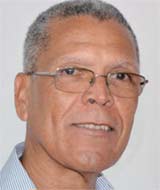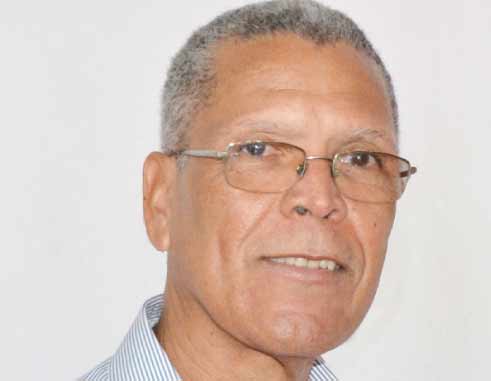
AS we continue to look at DSH and the issue of how we govern ourselves, we should also bear in mind that the governance failures coming to our attention are failures that have been demonstrated by both administrations, current and former. Neither side should, therefore, draw comfort from the failings of the other as the entire country suffers as a result of this mismanagement of our business and it’s long past time to stop the finger-pointing.
Before we again turn our attention to Mr. Teo Ah Khing and his development enterprise, there is one more aspect of the DSH proposal that bears examination and that is the matter of the now- confirmed loss of the abattoir at Beausejour. We first became aware of the conflict posed by the existence of the abattoir and the proposed DSH development following a press conference held by Invest St. Lucia on August 8, 2016 at which Minister Bradley Felix was also present.
Following that press conference, a report in this newspaper of August 11 confirmed that discussions had been held between the Government and DSH with respect to relocation of the abattoir, with these discussions reportedly having arisen due to DSH’s concerns about pork being processed at the abattoir. Apparently, the processing of pork at the abattoir was not compatible with the proposed development of an equestrian industry nearby.
The referenced VOICE newspaper article concluded that it “appeared that the pork processing part of the abattoir may be relocated elsewhere”, indicating also that Minister Bradley Felix was certain that the abattoir would remain in its present location but would be restricted in its operations. This is independently reported in a St. Lucia News Online article of August 8, that report quoting the government as indicating that notwithstanding the developer’s concerns, the abattoir would not be relocated, but that the pork processing aspect would be transferred to another facility.
This restriction on the processing of pork at the abattoir is peculiar and while the St. Lucia News Online article referenced above quotes Minister Felix as indicating that the DSH project would include an “equine diseases free zone”, nothing was officially forthcoming which would link the two – an equine disease free zone and a restriction on pork processing due to equestrian activity. But the concerns expressed by DSH over pork processing in proximity to the equestrian development, taken together with the resulting need to relocate that aspect of the abattoir’s operations, would lead anyone to at first conclude that the restriction on pork processing had something to do with the equine disease free zone.
Wondering then if this restriction on pork processing had anything to do with possible health issues for horses, I turned to Google, and with little effort came across a publication of Queensland Government, Australia, which indicates a list of diseases which affect animals. That list indicates that, in general, where horses are affected by diseases that affect pigs, then goats, sheep, cattle and very often humans are also affected by those diseases.
A little further searching then took us to a July 4, 2015 article in the New York Times which reported that in the equine industry, companion ponies and sometimes other animals are often kept in the same stall to provide steadying influences for nervous thoroughbreds. In the case of a thoroughbred horse at Belmont, that companion animal was a pig, while for another thoroughbred horse at the same stables, the companion animal was a goat. Belmont is a recognized thoroughbred horse racing venue.
Now thoroughly confused and never having heard of the concept before, a search was conducted on the requirements for an “Equine Disease Free Zone”. This led to the OIE, the World Organization for Animal Health, and their “Framework for the Establishment of an Equine Disease Free Zone”. That framework is informative, as its first two sentences read: “An Equine Disease Free Zone (EDFZ) is the temporary establishment of a zone free from specified multiple diseases. The establishment of an EDFZ can be considered by countries that wish to host an international equestrian sport event but that cannot control and eradicate all equine diseases in their entire country.” The first paragraph of this document concludes with: “An EDFZ also allows for the national horse population to be protected from the risk of diseases possibly imported into the zone”.
So we now know that an EDFZ is a temporary zone, established for the holding of international sporting events so that imported horses will not be infected by diseases which exist in the country hosting the event, and also so that those imported horses will not bring diseases into the country. Unfortunately, none of this is helpful on the question of the restriction of the processing of pork in proximity to equestrian activity, and so I suggested in an article in September 2016 that further explanation of this restriction was required.
No explanation for this restriction on the processing of pork at the abattoir has been provided, but Clause 12 of the leaked Framework Agreement for the DSH project provides that the Government will establish an Equine Disease Free Zone to facilitate the import and export of thoroughbred horses, will mobilize the agencies necessary to establish the EDFZ, and will maintain it in conjunction with DSH. Next, we have Clause 2.1 of the also leaked Supplemental Agreement which states that “In order to satisfy the requirements of the Equine Disease Free Zone (EDFZ), the Land for the development shall be expanded to include … the existing Meat Processing Plant”.
Now we have official connection between the abattoir and the EDFZ, except that instead of the restriction on pork previously mentioned, the entire abattoir is to be absorbed into this DSH project, with DSH required to replace the abattoir at another location, and at its own cost. And so, while the public was given the assurance by Government in August 2016 that the abattoir would remain in its current location with a restriction on its operations, the Government signed an agreement in November 2016 agreeing to its relocation.
To compound this issue, no one can tell us what the requirements for the establishment of an EDFZ are, or what its size is likely to be. Even the “Fact Sheet” published by Invest St. Lucia on January 17, 2017 first gives the area required for the racetrack as 200 acres but then states that the area required for the EDFZ is included “within the approximate 300 acres earmarked for phase 1 (racetrack) …”. And when asked about the size of the EDFZ at that town hall meeting hosted by Invest St. Lucia on February 1, 2017, the Chief Veterinary Officer informed the meeting that this information was not available, and is reported as advising that the size of the EDFZ would depend “on factors such as the physical climate, vector population, and their disease status …” (VOICE, February 4, 2017).
So that while in February 2017 our Chief Veterinary Officer provided us with the technical matters which have to be assessed in order to determine the size of the Equine Disease Free Zone, indicating at that time that no advice could be given on the area required for this EDFZ, somehow, two months earlier, our Government had entered into a Supplemental Agreement with DSH to expand the land required for the development “In order to satisfy the requirements of the Equine Disease Free Zone”. What “requirements” could this clause be referring to?
The issue surrounding the abattoir following the signature of the Framework Agreement was the proposed restriction on the processing of pork at the abattoir, and while we have been provided with no rational basis for this restriction, it would seem that the solution has been to condemn the abattoir in its entirety. Again, in an attempt to make this palatable, we are told that DSH will replace the facility at another location, and will bear the cost.
It would seem that in light of the above, it would be in the Government’s better interest to provide the public with the technical requirements for establishment of an Equine Disease Free Zone in Vieux Fort, at the very least indicating why it was initially thought that only pigs and the processing of pork at the abattoir posed a hazard to the equine industry at that location.
An explanation is necessary, as in the absence of a rational basis for excluding the processing of pigs at the abattoir while presumably allowing the processing of cattle, sheep, goats and other animals as originally envisaged, the public cannot be faulted for wondering if that proposed restriction on pork did not arise from the cultural or religious preferences of the Master Developer, DSH. And should that be the case, the public could also be forgiven for wondering if those cultural or religious preferences would also apply to the casino, marina, hotel and residential aspects of this proposed development.
In any event, the Government should also refrain from further public reminders of the condition of the Supplemental Agreement that the Master Developer, DSH, will pay for the relocation of the abattoir at its own cost, as this makes the issue more, not less, disturbing. The abattoir is a gift from the Government of Taiwan with a reported value of EC$21 million and our Government should not re-purpose a gift from a friendly government unless there is an exceptional reason for doing so. Any such reason must be rational and must also be made public.
And as to the Master Developer meeting the cost of relocation of the abattoir, well, EC$21 million is a trivial sum in the context of an undefined US$2.6 billion project and might very well be considered a rounding-off error in the calculation of the costs of the various components. Not even the overall cost of the project is clear, as, following signing of the Framework Agreement in July 2016, Invest St. Lucia first described the project as “costing over US$2.6bn”, then as costing “about US$2bn” in its press release following the sod-turning ceremony in November 2016, while the Framework Agreement indicates something called a “Gross Development Value” of the project on completion of US$3bn. “Gross Development Value” is, however, not defined in that Agreement.
With figures associated with this project varying between US$2 billion and US$3 billion, accommodating EC$21 million should not cause anyone any discomfort. Note also that we are speaking of project cost, not project value, as no one has any means of determining the true value of the works to be undertaken. The costs will all be determined by DSH, who will design the works, engage the contractors, and build whatever is supposedly to be built. And we know from Clause 7 of the Framework Agreement that every item of cost associated with this project will be recovered from the sale of our passports.
Our Government may have considered relocation of the abattoir a matter of expedience in the furtherance of the DSH project, but in the absence of a compelling reason for doing so, it remains a disturbing concession to DSH, and an unnecessary embarrassment in our relations with the Government of Taiwan (ROC). We can only hope that the reason for this relocation is technical, and not cultural.
We conclude this discussion of DSH next week with a continued look at Teo Ah Khing.














This DSH affair smells rotten day by day.